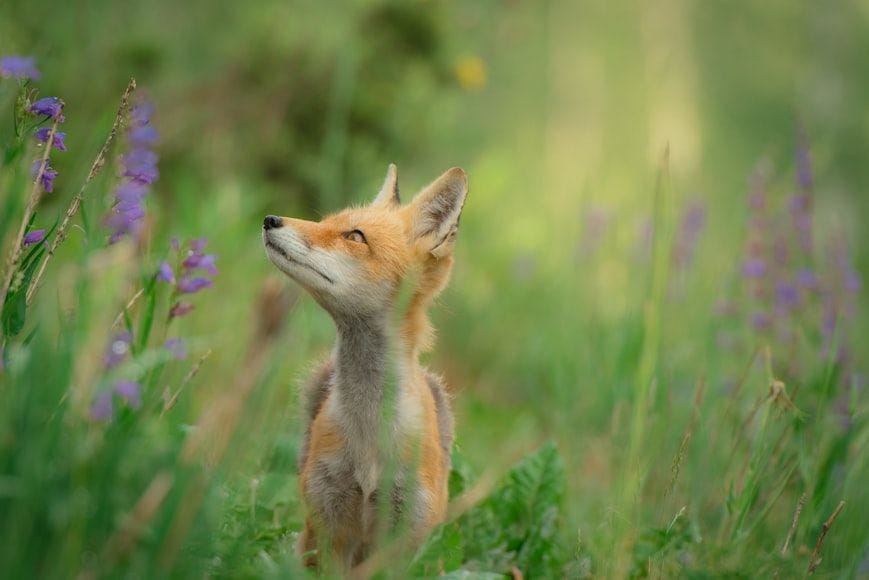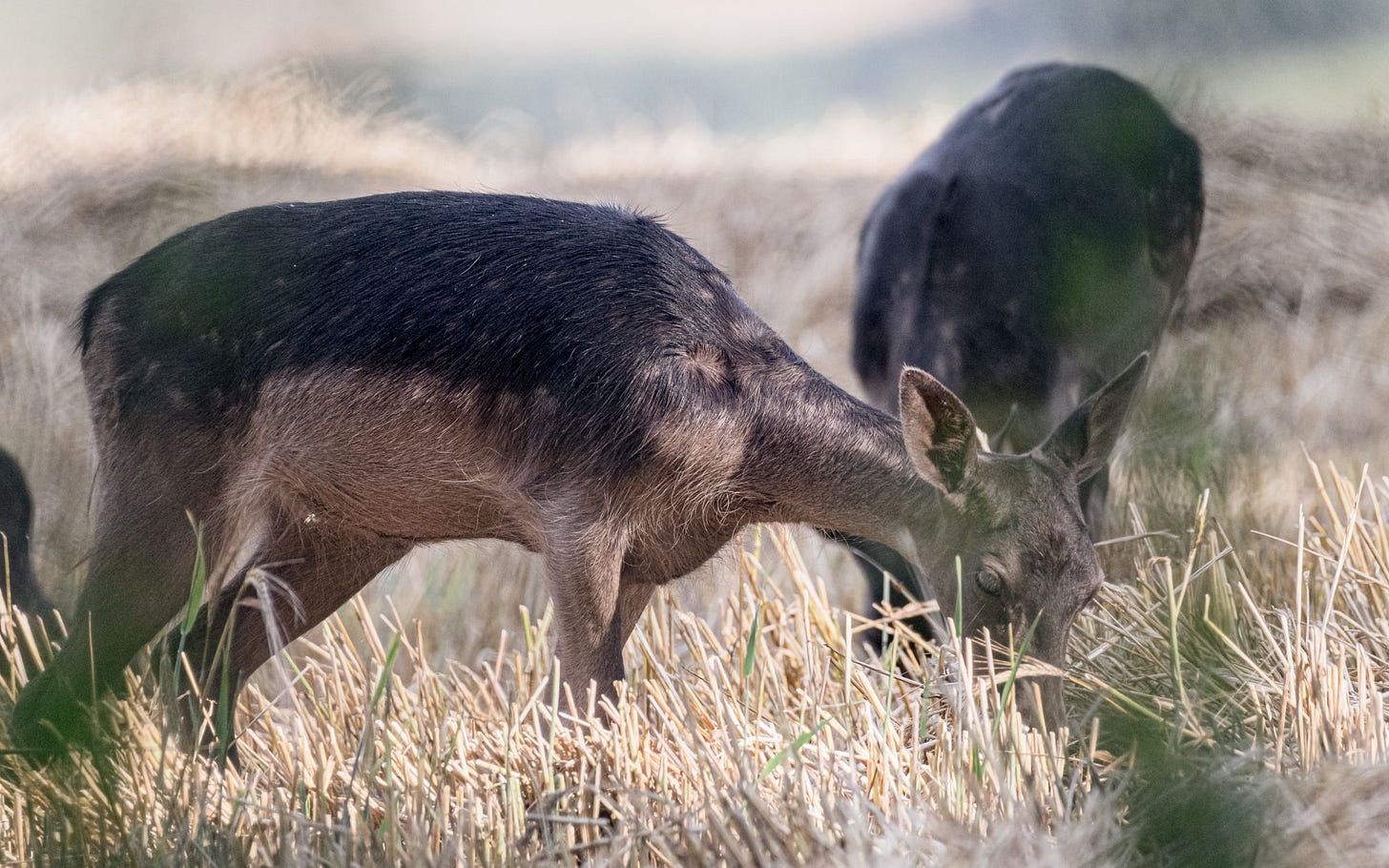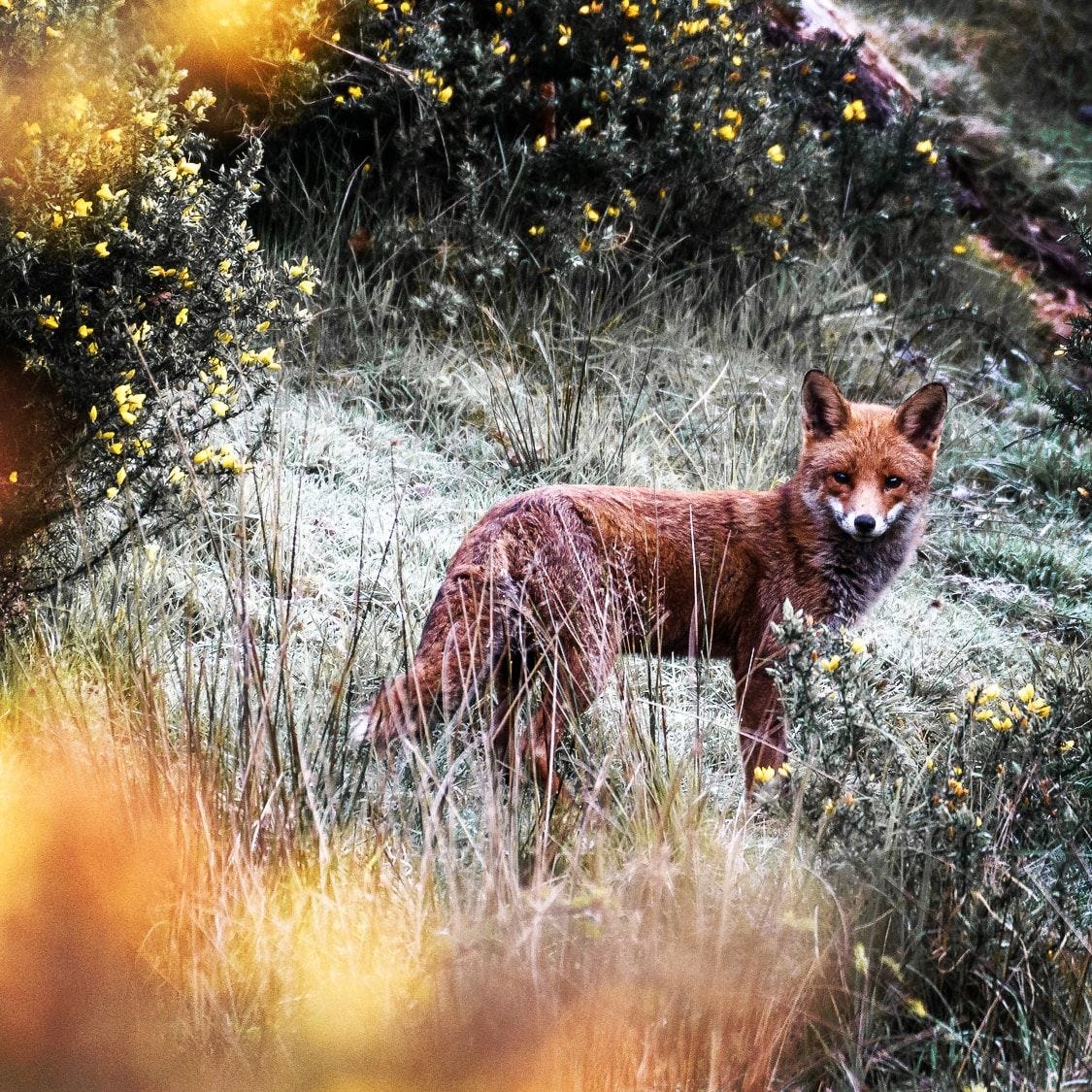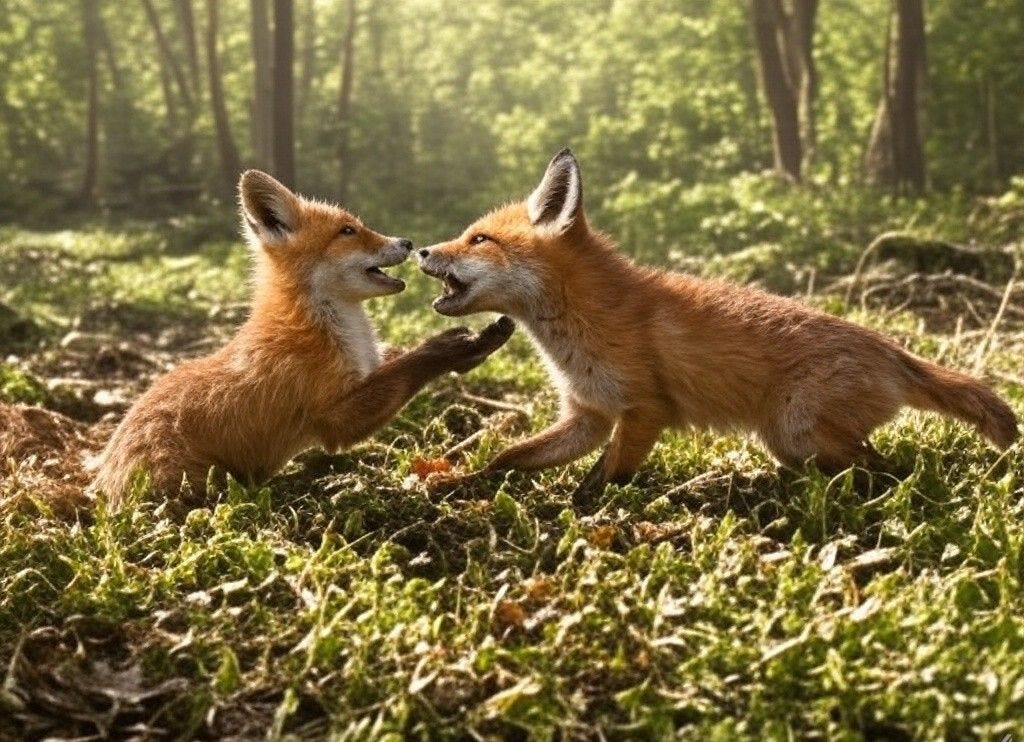A Day in the Life of a LettsSafari Fox
Dawn's First Light: A fox's tale in Britain's rewilded west country.
At LettsSafari's rewilding safari parks on the outskirts of Exeter City we host a lively group of resident foxes that have been in these historic hunting grounds for centuries. The old tales passed down by the locals are magical. The red fox is one of the apex predators in smaller-scale rewilding - one we have been closely watching for many years.
To kick off a new series on 'the predators of smaller-scale rewilding' we tell the tale of a day in the life of a red fox in LettsSafari parks.
As the first rays of sunlight pierce through the morning mist, a red fox emerges from her den beneath a gnarled oak tree. Here in this rewilded corner of southwest England, where nature has been given space to breathe, she represents a vital piece in an intricate ecological puzzle.
The vixen's whiskers twitch as she tests the morning air. The overnight rain has left the ground soft, perfect for detecting the movement of voles and mice beneath the thick grass that now carpets what was once closely-cropped pasture. This abundance of small mammals isn't just a feast for our fox - it's a sign of the park's flourishing biodiversity, where reduced human intervention has allowed natural processes to resume.
Moving silently through a patch of brambles, she passes evidence of last night's work: scattered feathers from a woodpigeon that strayed too far from its roost. Such predation helps maintain the delicate balance of bird populations, preventing any single species from dominating the available resources.
By mid-morning, the fox is busy patrolling her territory's boundaries. She pauses to scent-mark a fallen log, maintaining the invisible borders that help structure the park's predator population. Her presence here creates what ecologists call a "landscape of fear" - prey species modify their behaviour and movement patterns in response to predation risk, preventing overgrazing and allowing vegetation to regenerate naturally.
The afternoon finds our vixen resting in tall grass, ears constantly pivoting to track the sounds around her. A family of black fallow deer passes nearby, their presence a testament to how predator and prey can coexist in these spaces. The fox's hunting pressure helps keep deer alert and mobile, preventing them from overgrazing any single area - a key factor in maintaining the park's mosaic of habitats.







